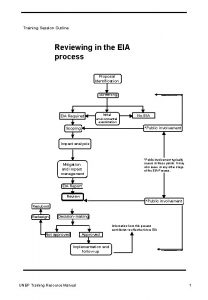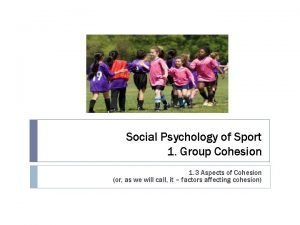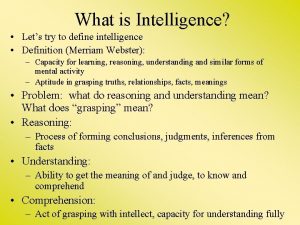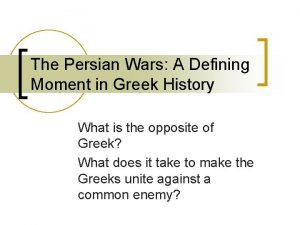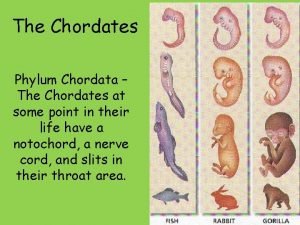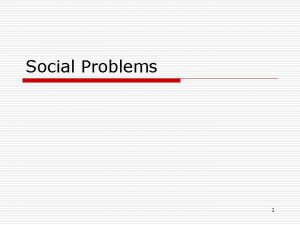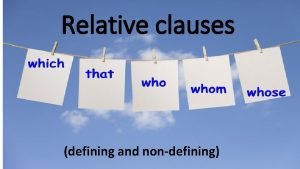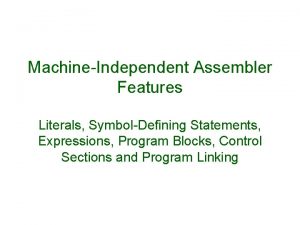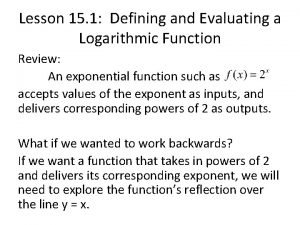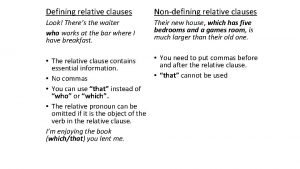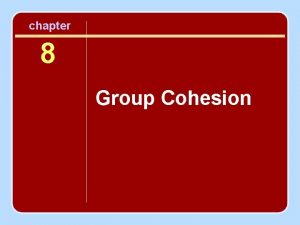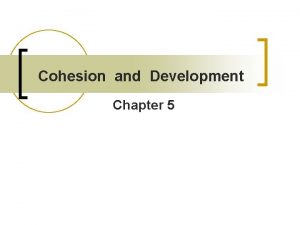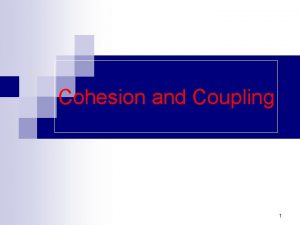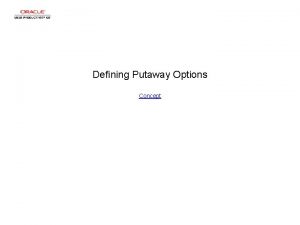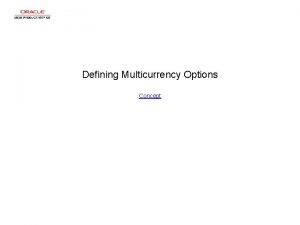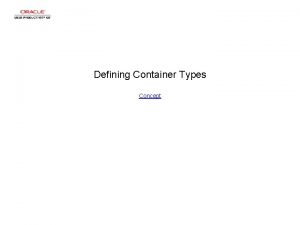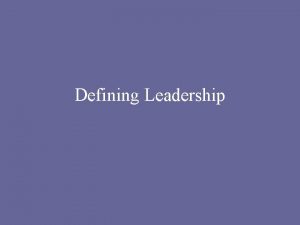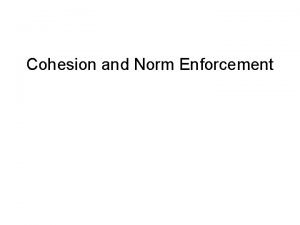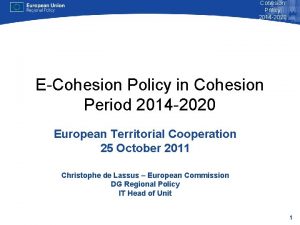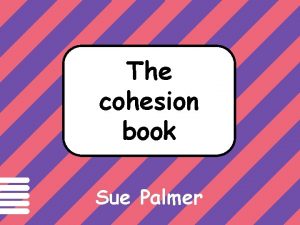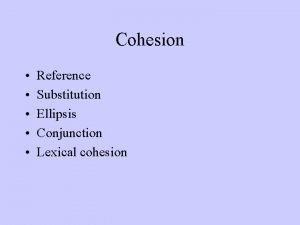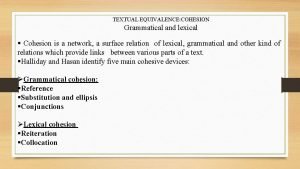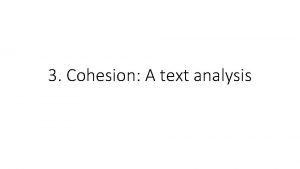chapter 8 Group Cohesion Session Outline Defining Cohesion

























- Slides: 25

chapter 8 Group Cohesion

Session Outline • • Defining Cohesion Carron’s Conceptual Model of Cohesion Measuring Cohesion The Cohesion––Performance Relationship (continued)

Session Outline (continued) • Other Factors Associated With Cohesion • Building Cohesion • • Exercise settings Sport settings Leader or coach strategies Group member strategies

Defining Cohesion “A dynamic process reflected in the tendency for a group to stick together and remain united in the pursuit of its instrumental objectives and/or for the satisfaction of member affective needs” (Carron, Brawley, & Widmeyer, 1998)

Defining Cohesion Task cohesion The degree to which group members work together to achieve common goals and objectives Social cohesion The interpersonal attractions among group members

Carron’s Conceptual Model of Cohesion Adapted, by permission, from A. Carron, 1982, "Cohesiveness in sports groups: Interpretations and considerations, " Journal of Sports Psychology 4(2): 131.

Measuring Cohesion Questionnaires (e. g. , Group Environment Questionnaire) focus on how attractive the group is to the individual members and how the members perceive the group. • Group integration—task subscale (e. g. , Our team is united in trying to reach its goals for performance) (continued)

Measuring Cohesion (continued) • • • Group integration—social subscale (e. g. , Members of our team do not stick together outside of practicing and games) Individual attraction to group—task subscale (e. g. , I don’t like the style of play on this team) Individual attraction to group social subscale (e. g. , Some of my best friends are on the team)

Measuring Cohesion Sociogram

The Cohesion–Performance Relationship Cohesion is positively related to performance. The relationship was traditionally thought to depend on several factors. Recent research has shown which of these factors do influence the cohesion–performance relationship.

The Cohesion–Performance Relationship Types of measures • It was once thought that a positive cohesion– performance relationship existed with task cohesion measures and no cohesion–performance relationship with social cohesion measures. • However, the most recent research shows that increases in both task and social cohesion are associated with increased performance.

The Cohesion–Performance Relationship Task demands • Original research argued that the cohesion– performance relationship was stronger with interacting teams (e. g. , volleyball) and that no relationship existed with coacting teams (e. g. , bowling). • However, the most recent research has shown the task demands do not influence the cohesion–performance relationship.

The Cohesion–Performance Relationship Circular relationship: Increased cohesion leads to greater performance and brings teams together, which leads to still more cohesion.

Other Factors Associated With Cohesion Team satisfaction Increased cohesion is related to increased satisfaction. Conformity The more cohesive a group is, the greater its pressure to conform to the attitudes and behaviors of the group. (continued)

Other Factors Associated With Cohesion (continued) Adherence More cohesive exercise classes have better attendance, are more likely to arrive on time, are less likely to drop out, are more resistant to disruption, are more likely to experience positive affect related to exercise, and have stronger efficacy for exercise. Social support There is a positive relationship between the social support an individual receives and that person’s evaluation of group cohesion.

Other Correlates of Cohesion Stability Teams higher in cohesion can better resist disruption; teams staying together longer tend to be more cohesive. Group goals are tied to group cohesion. Other factors are group status, role clarity and acceptance, group norms, decision style, collective efficacy, self-handicapping, gender.

Building Cohesion Exercise settings Exercise classes with high feelings of group cohesion have fewer dropouts and late arrivals than do classes low in cohesion Sport settings Team-building exercises, clear and meaningful roles, team goals, communication, and personal sacrifice are related to increased cohesion.

The MAPS Approach to Team Building • Mission: Derive and clarify team mission. • Assessment: assess team strengths and areas needing improvement. • Plan: Develop action plans to improve effort and commitment. • Systematic evaluation: Reflect, review, and revise group goals and plans.

Strategies Suggested to Build Group Cohesiveness Increase distinctiveness by • having a group name, • making a group T-shirt, • handing out neon shoelaces, or • making posters for class. (See table 8. 1 on p. 195 of text. )

Principles Underlying the Team-Building Program in a Sport Setting Coaches used several principles to develop team-building programs, including leadership, distinctiveness, and sacrifice. (See table 8. 2 on p. 196 of text. )

Guidelines for Building Team Cohesion Leader strategies • Communicate effectively. • Explain individual roles in team success. • Develop pride within subunits. • Set challenging team goals. (continued)

Guidelines for Building Team Cohesion (continued) Leader strategies • Encourage team identity. • Avoid formation of social cliques. • Avoid excessive turnover. (continued)

Guidelines for Building Team Cohesion (continued) Leader strategies • Conduct periodic team meetings. • Know the team climate. • Get to know others; enhance personal disclosure.

Guidelines for Building Team Cohesion Group member strategies • Get to know members of the group. • Help group members whenever possible. • Give group members positive reinforcement. (continued)

Guidelines for Building Team Cohesion (continued) Group member strategies • Be responsible. • Communicate honestly and openly with coach or leader. • Give 100% effort at all times.
 Definig clause
Definig clause Relative clauses defining and non defining
Relative clauses defining and non defining Diferencia entre defining y non defining
Diferencia entre defining y non defining Defining relative clause meaning in telugu
Defining relative clause meaning in telugu Tipos de relative clauses
Tipos de relative clauses Nonessential adjective clause
Nonessential adjective clause Training session outline
Training session outline Social cohesion
Social cohesion Carron’s conceptual model of cohesion
Carron’s conceptual model of cohesion Quote sandwich example
Quote sandwich example Definition of smartness
Definition of smartness The defining moment in greek history is the wars.
The defining moment in greek history is the wars. Chordate characteristics
Chordate characteristics Sociological problems definition
Sociological problems definition Lord capulet defining quotes
Lord capulet defining quotes Lady montague defining quotes
Lady montague defining quotes Non defining relative clauses as sentence modifiers
Non defining relative clauses as sentence modifiers Situational poverty definition
Situational poverty definition Symbol defining statements in assembler
Symbol defining statements in assembler 15-1 defining and evaluating a logarithmic function
15-1 defining and evaluating a logarithmic function Leadership management definition
Leadership management definition Objective in problem formulation means
Objective in problem formulation means Defining the problem and research objectives
Defining the problem and research objectives Non defining relatives clauses
Non defining relatives clauses Approaches to measuring performance
Approaches to measuring performance Defining marketing for the 21st century
Defining marketing for the 21st century






